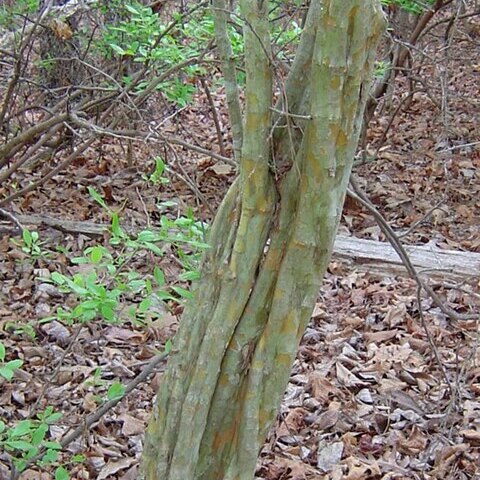Arborescent shrub or more often a tree to 8 m; lvs narrowly obovate, 0.5–3 × 0.6–1.5 cm, glabrous, dark green and glossy above, attenuate at the base into a short winged petiole, crenate or crenately lobed only near the tip, the veins running to the sinuses as well as to the points of the lobes; fls 0.7–1 cm wide, in compound glabrous cymes; fr 4–6 mm thick, red, with a broad low persistent cal, thin dry flesh, and 3–5 nutlets. Usually in moist or fertile soil; s. Va. to Fla. and Tex., and n. in the Mississippi Valley to s. Mo. and s. Ill.
A tree.


